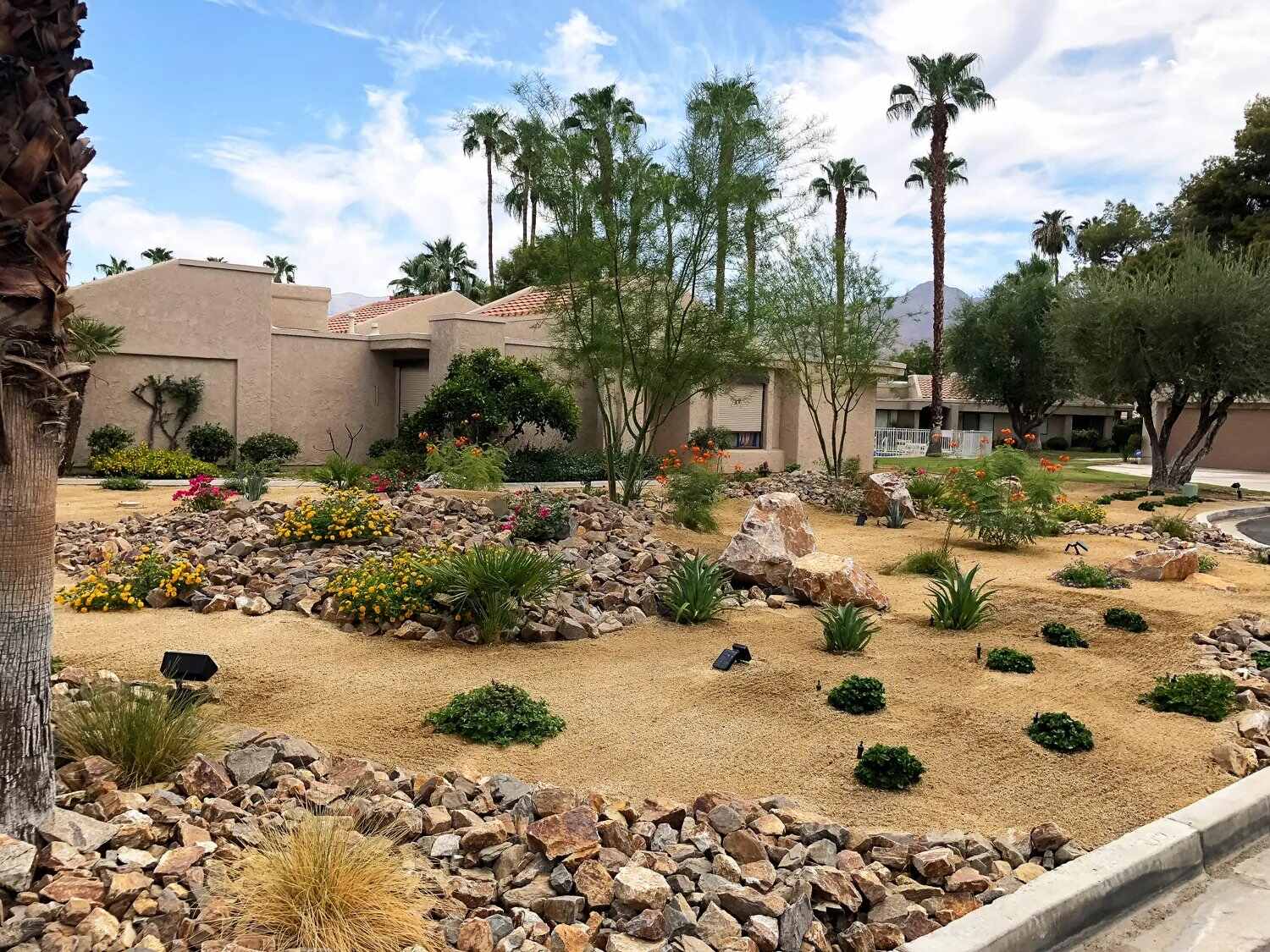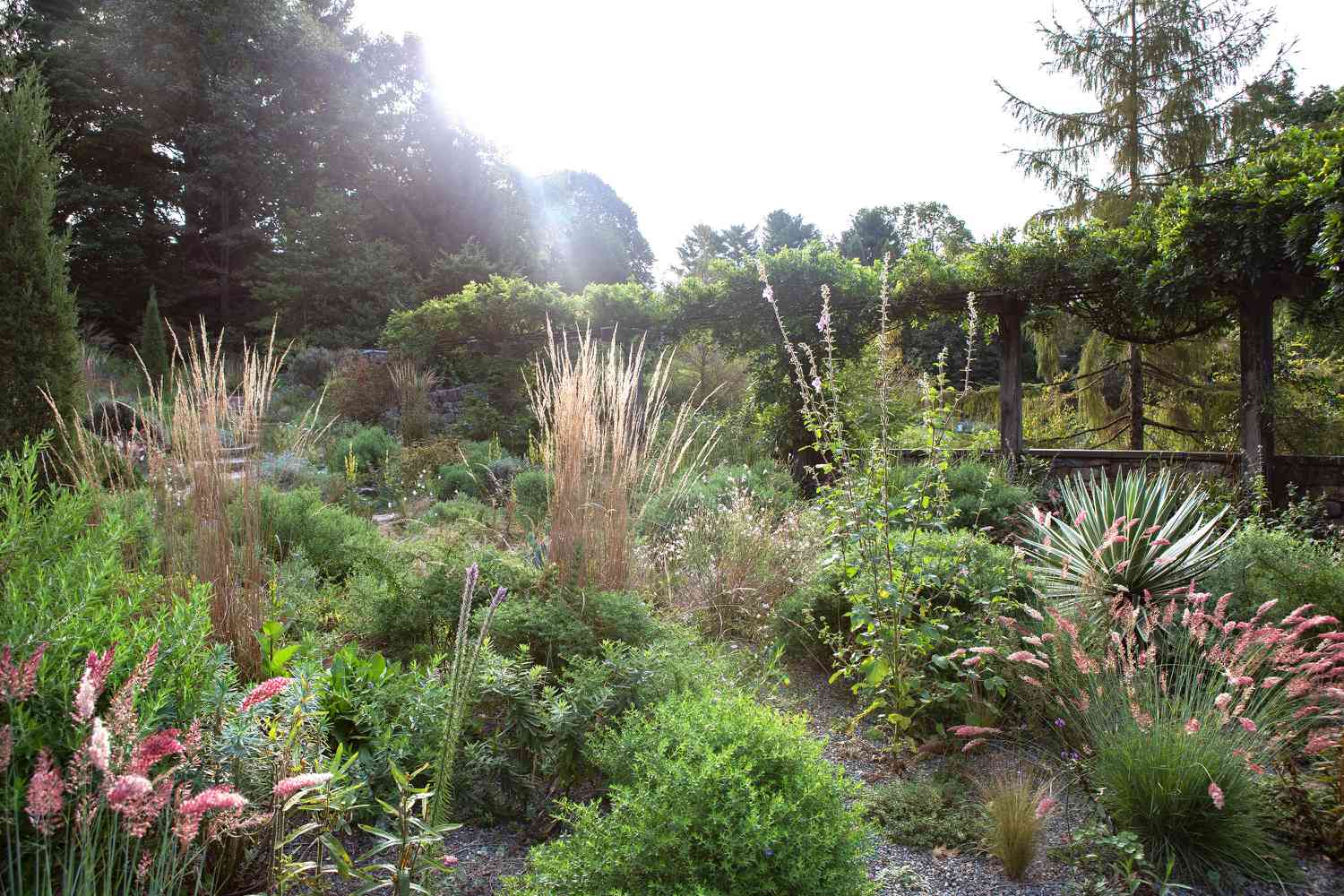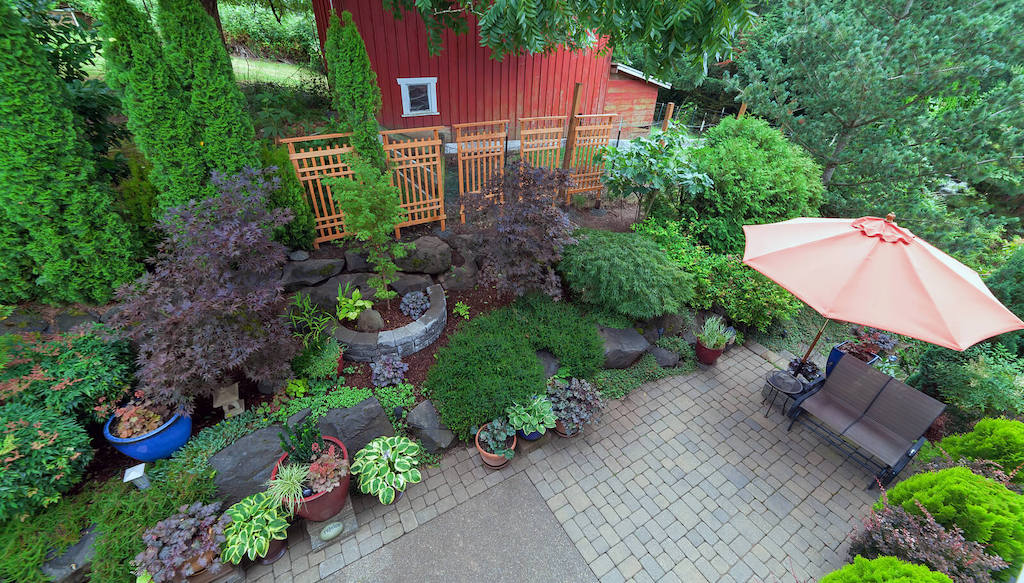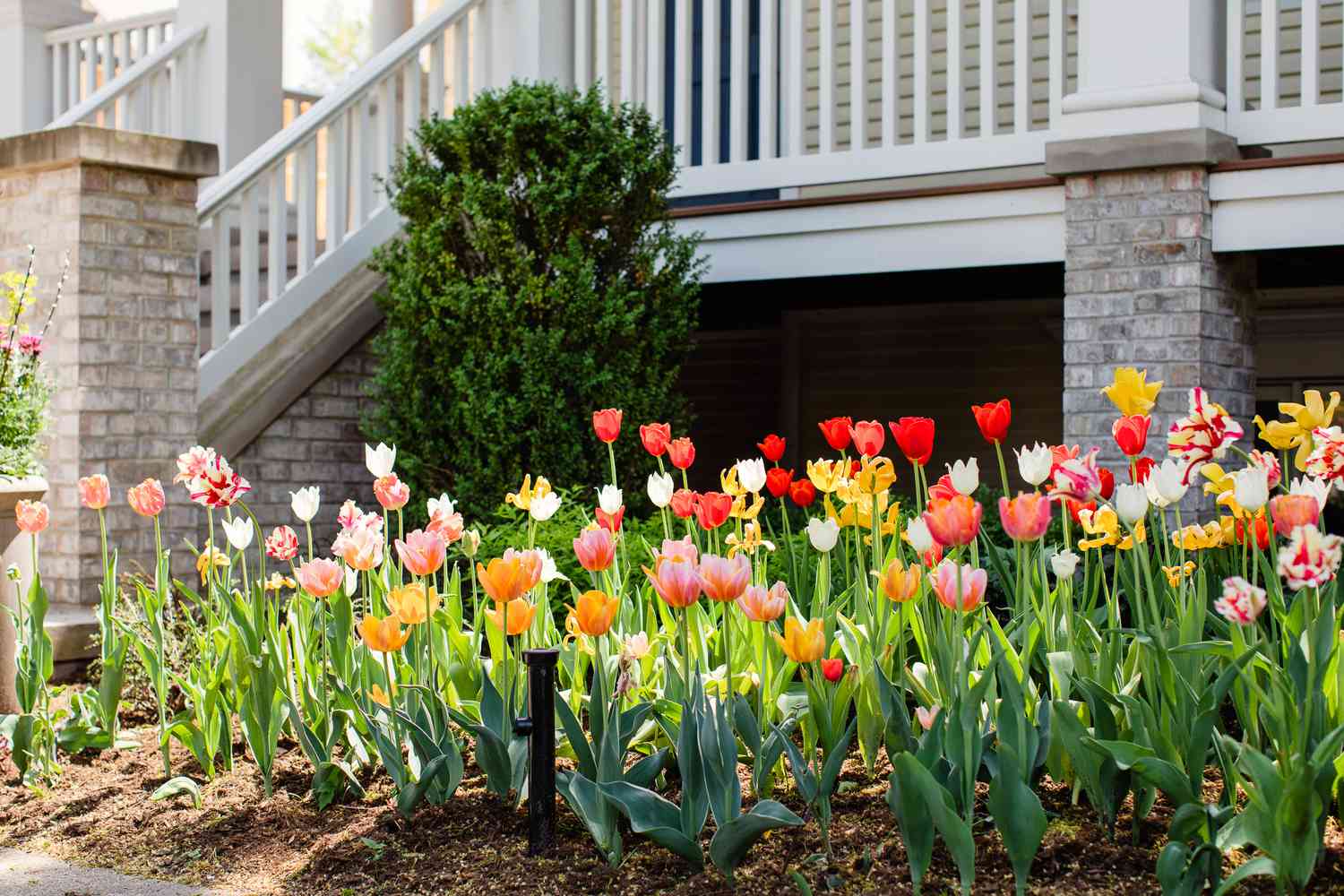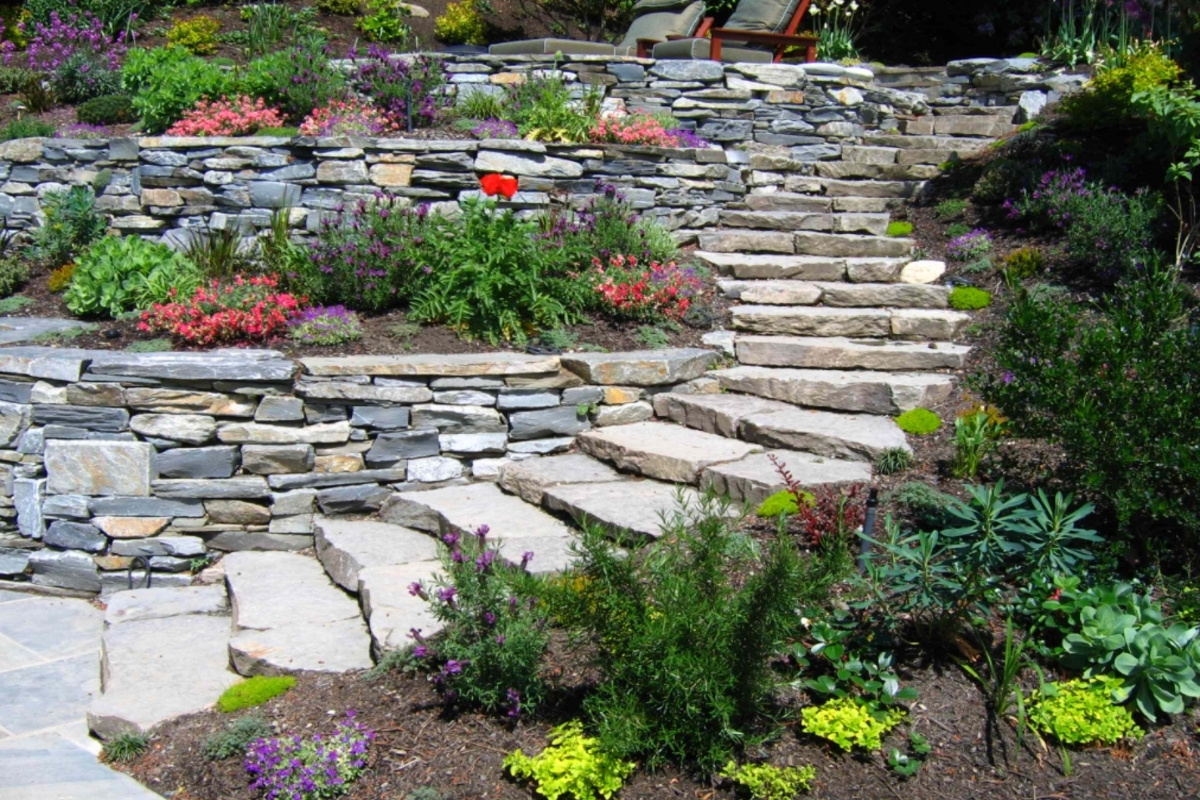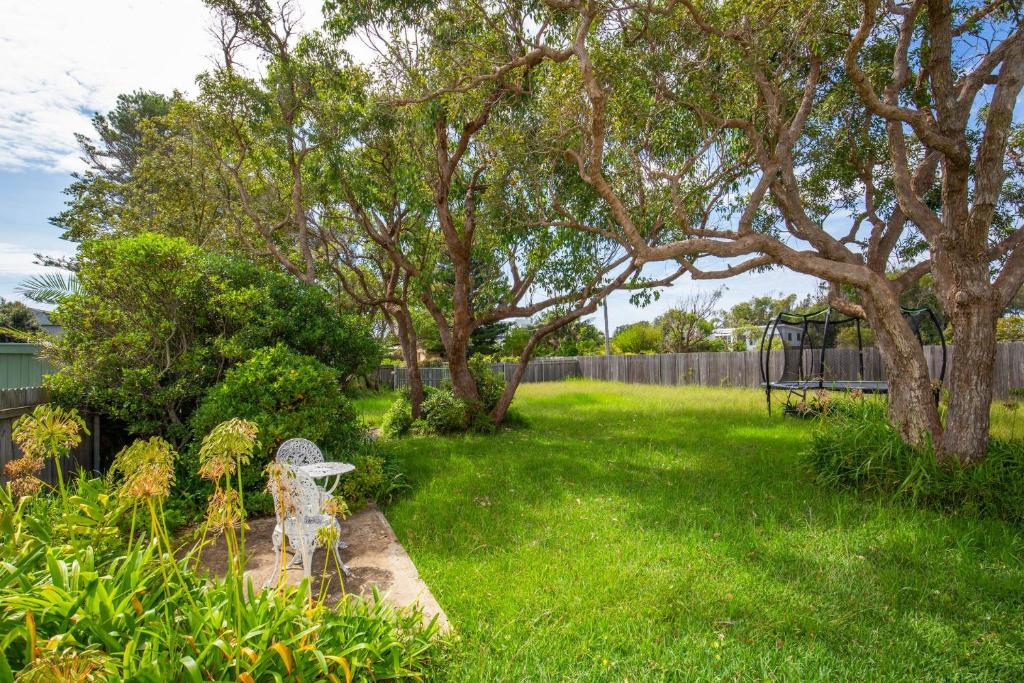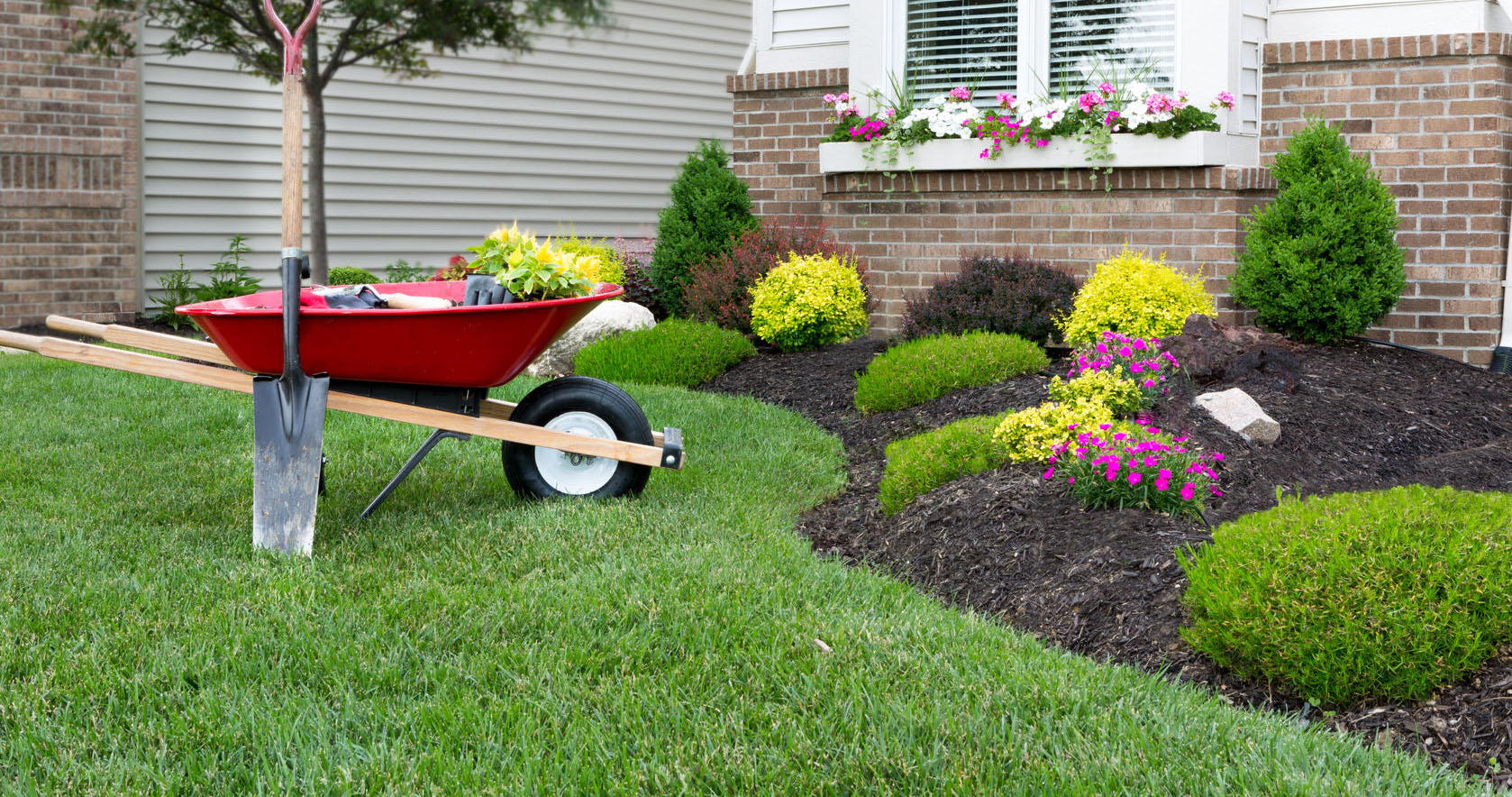Home>Gardening Tips and Tricks>Eco-Friendly Gardening>What Is Landscaping Fabric
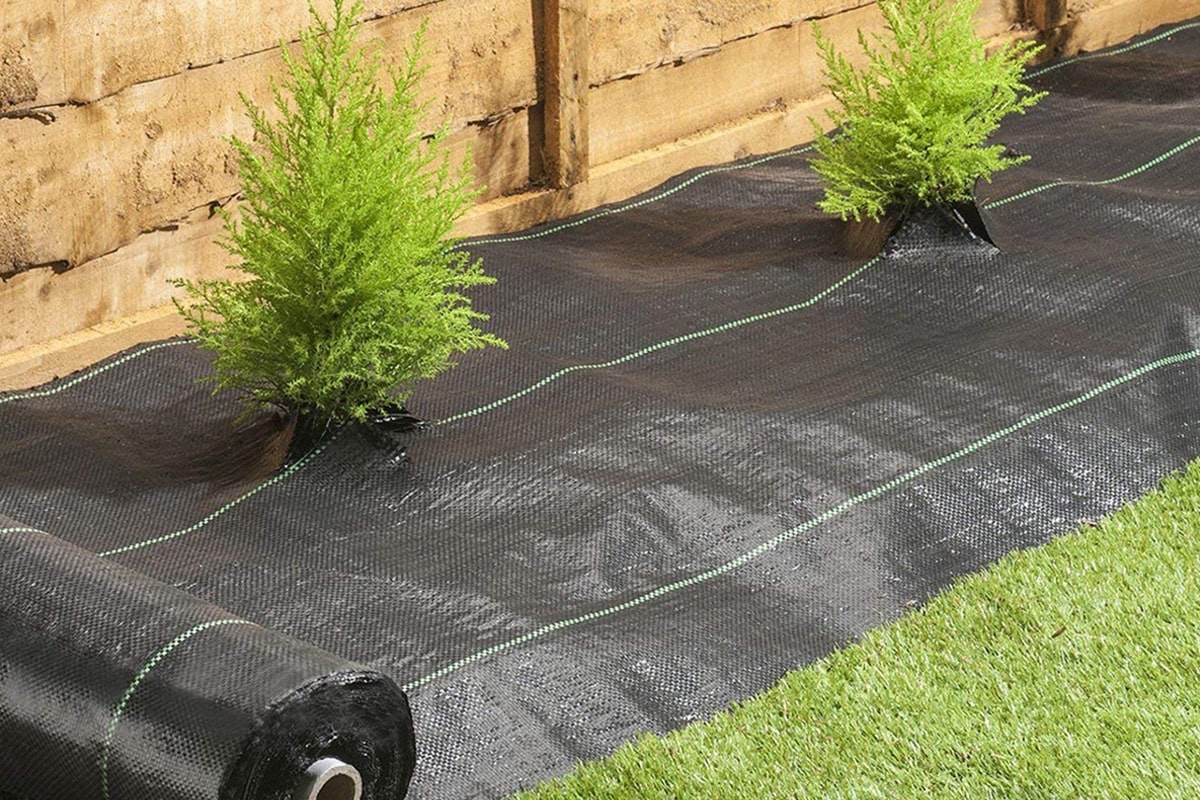

Eco-Friendly Gardening
What Is Landscaping Fabric
Published: August 18, 2023
Discover the benefits of eco-friendly gardening with landscaping fabric. Create a sustainable and low-maintenance garden using this essential tool.
(Many of the links in this article redirect to a specific reviewed product. Your purchase of these products through affiliate links helps to generate commission for Chicagolandgardening.com, at no extra cost. Learn more)
Table of Contents
- Introduction
- What is Landscaping Fabric?
- The Benefits of Using Landscaping Fabric
- How to Choose the Right Landscaping Fabric
- Preparing the Area for Landscaping Fabric Installation
- Installing Landscaping Fabric Step-by-Step
- Tips for Maintaining Landscaping Fabric
- Common Mistakes to Avoid with Landscaping Fabric
- Conclusion
Introduction
Welcome to the world of eco-friendly gardening! In today’s fast-paced and environmentally conscious world, many people are turning to eco-friendly practices, including gardening. One of the key components of eco-friendly gardening is using sustainable and environmentally friendly products, such as landscaping fabric.
Landscaping fabric, also known as weed fabric or weed control fabric, is a versatile tool that can greatly enhance your gardening experience. It is a woven or non-woven material that is placed under the soil to suppress weed growth and provide a barrier against pests and diseases. But landscaping fabric does much more than just weed control.
By using landscaping fabric, you can create a low-maintenance garden that is both beautiful and environmentally friendly. It helps conserve water by reducing evaporation, prevents soil erosion, and promotes healthy plant growth. Additionally, it minimizes the need for chemical herbicides, making it a sustainable choice for eco-conscious gardeners.
In this article, we will explore the benefits of using landscaping fabric, how to choose the right type for your garden, and step-by-step instructions on how to install it. We will also provide tips for maintaining landscaping fabric and common mistakes to avoid. So, whether you’re a seasoned gardener looking to make your garden more sustainable or a beginner looking for eco-friendly gardening solutions, this article will guide you through the world of landscaping fabric.
What is Landscaping Fabric?
Landscaping fabric, also known as weed fabric or weed control fabric, is a permeable barrier that is placed on the soil surface to suppress weed growth and provide a protective layer for your plants. It is typically made from woven or non-woven materials, such as polypropylene or polyester, which are durable and resistant to degradation from sunlight and water exposure.
The primary purpose of landscaping fabric is to prevent weeds from taking over your garden. It acts as a physical barrier, blocking sunlight from reaching weed seeds and preventing them from germinating. By keeping weeds at bay, landscaping fabric reduces the amount of time and effort you need to spend on weeding, allowing you to focus on more enjoyable aspects of gardening.
Aside from weed control, landscaping fabric offers several other benefits. Firstly, it helps retain moisture in the soil by reducing evaporation. This is particularly beneficial during hot summer months when water conservation is crucial. By minimizing water loss, landscaping fabric aids in the development and growth of your plants, ensuring they receive adequate hydration.
Furthermore, landscaping fabric acts as a protective layer, shielding the soil from erosion caused by heavy rainfall or strong winds. It holds the soil in place, preventing it from being washed away and helping maintain the integrity of your garden beds or slopes.
In addition to weed control and soil protection, landscaping fabric also minimizes the need for chemical herbicides. By suppressing weed growth naturally, you can reduce your reliance on synthetic herbicides, making your garden more environmentally friendly.
Overall, landscaping fabric is a versatile and eco-friendly tool that can greatly benefit your garden. Whether you’re a seasoned gardener or just starting out, incorporating landscaping fabric into your gardening routine can help create a beautiful, low-maintenance space that thrives while reducing your impact on the environment.
The Benefits of Using Landscaping Fabric
Using landscaping fabric in your garden can provide a range of benefits that go beyond weed control. Let’s explore some of the advantages of incorporating landscaping fabric into your gardening routine:
- Weed suppression: One of the primary benefits of using landscaping fabric is its ability to suppress weed growth. By acting as a barrier, it blocks the sunlight and prevents weed seeds from germinating. This saves you time and effort spent on constant weeding, allowing you to focus on other gardening tasks.
- Water conservation: Landscaping fabric helps retain moisture in the soil by reducing evaporation. By covering the soil surface and blocking direct sunlight, it slows down the rate at which water evaporates. This helps maintain soil moisture levels, reducing the need for frequent watering and promoting more efficient water usage in your garden.
- Soil protection: By acting as a physical barrier, landscaping fabric helps protect the soil from erosion caused by heavy rainfall, wind, or foot traffic. It holds the soil in place, preventing it from being washed away and ensuring the longevity of your garden beds and slopes.
- Prevents soil compaction: Excessive foot traffic can compact the soil, making it difficult for plants to establish healthy root systems. Landscaping fabric can help prevent soil compaction by distributing the weight and pressure evenly, allowing air and water to penetrate the soil and promoting optimal root growth.
- Pest and disease prevention: Landscaping fabric creates a physical barrier between the soil and potential pests, such as slugs and snails. It also helps minimize the spread of soil-borne diseases by preventing contact between the plants and the underlying soil.
- Low-maintenance gardening: By suppressing weed growth and providing a clean surface, landscaping fabric reduces the amount of time and effort required for maintenance tasks, such as weeding and cleaning paths. This makes it an excellent choice for those who prefer a low-maintenance garden.
- Environmentally friendly: Landscaping fabric reduces the need for chemical herbicides, making it an eco-friendly choice for weed control. By using landscaping fabric, you can minimize your reliance on synthetic chemicals and contribute to a healthier environment.
With these benefits in mind, incorporating landscaping fabric into your garden can help create a beautiful, low-maintenance, and sustainable outdoor space. It provides effective weed control, conserves water, protects the soil, and promotes healthy plant growth while reducing your environmental impact.
How to Choose the Right Landscaping Fabric
Selecting the right landscaping fabric is crucial to ensure optimal performance and long-lasting results. Here are some factors to consider when choosing the right landscaping fabric for your garden:
- Material: Landscaping fabric is available in different materials, including woven and non-woven fabrics. Woven fabrics are more durable and suitable for heavy-duty applications, whereas non-woven fabrics are more lightweight and often used for smaller gardening projects. Consider the specific needs of your garden and choose a material that is appropriate.
- Permeability: Look for landscaping fabric that is permeable to water and air. This allows for proper drainage and ensures that the soil beneath the fabric can receive necessary nutrients and oxygen. Avoid fabrics that are too tightly woven as they may inhibit the flow of water and air.
- Thickness: Consider the thickness or weight of the fabric. Thicker fabrics provide more durability and better weed suppression. However, they can be more challenging to work with and may require extra effort during installation.
- UV Resistance: Choose landscaping fabric that is UV-resistant to ensure it can withstand prolonged exposure to sunlight without degrading or tearing. UV resistance helps extend the lifespan of the fabric and ensures its long-term effectiveness.
- Size and Coverage: Measure the area of your garden that needs to be covered and choose landscaping fabric that provides adequate coverage. Consider purchasing extra fabric to account for overlapping and securing the edges.
- Ease of Installation: Look for landscaping fabric that is easy to handle and install. Some fabrics come with pre-cut lines or grids, which can make installation smoother and more precise. Additionally, consider opting for a fabric that is easy to cut and shape to fit your specific garden layout.
- Environmental Impact: Choose landscaping fabric that is environmentally friendly and free from harmful chemicals. Look for certifications or labels that indicate the fabric is safe for use in organic gardening practices. This ensures that your garden remains truly eco-friendly.
By considering these factors, you can select the right landscaping fabric that suits the specific needs of your garden. Remember to prioritize durability, permeability, thickness, UV resistance, size and coverage, ease of installation, and environmental impact when making your decision. Taking the time to choose the right landscaping fabric will result in a more successful and sustainable gardening experience.
Preparing the Area for Landscaping Fabric Installation
Before installing landscaping fabric, it is essential to prepare the area to ensure optimal performance and effectiveness. Proper preparation will help create a smooth and long-lasting barrier against weeds. Follow these steps to prepare the area for landscaping fabric installation:
- Clear the area: Start by removing any existing plants, weeds, rocks, or debris from the area where you plan to install the landscaping fabric. This will create a clean and flat surface for the fabric to be placed on.
- Level the soil: If the area is uneven, use a hard rake or garden shovel to level the soil. This will help prevent water pooling and ensure uniform coverage of the fabric.
- Amend the soil (optional): If desired, this is a good time to amend the soil with organic matter or compost. Mixing in organic matter can improve soil quality, drainage, and fertility, creating an ideal environment for your plants.
- Consider irrigation: If you plan to install an irrigation system, it is recommended to do so before laying the landscaping fabric. This will help ensure easy access to the soil for setting up the irrigation lines.
- Edge the area: Install landscape edging or use other appropriate materials to define the boundaries of the area where the landscaping fabric will be installed. Edging helps prevent the fabric from shifting or spreading beyond the intended area.
- Apply a layer of mulch: Before laying the fabric, it is beneficial to apply a layer of organic mulch on the soil surface. Mulch helps further suppress weed growth, retains moisture, and provides insulation for the soil.
By following these preparation steps, you ensure that the soil is ready and the area is properly cleared and leveled. This sets the stage for effective and efficient installation of the landscaping fabric. Taking the time to prepare the area will result in a well-maintained garden space that is protected from weeds and promotes healthy plant growth.
Installing Landscaping Fabric Step-by-Step
Installing landscaping fabric is a straightforward process that can be easily done with a few simple steps. Follow this step-by-step guide to ensure proper installation of your landscaping fabric:
- Measure and cut: Measure the area where you plan to install the fabric and cut the landscaping fabric to the appropriate size, allowing for a couple of inches of overlap along the edges.
- Clear the area: Ensure that the area is clear of any rocks, debris, or roots that could puncture or damage the fabric. Smooth out the soil surface to create an even base.
- Start at one end: Begin at one end of the area and unroll the landscaping fabric, keeping it taut as you go. If the fabric has a specified top and bottom side, make sure the top side is facing up.
- Secure the fabric: Use landscape fabric pins or U-shaped garden staples to secure the fabric in place. Insert the pins or staples every few feet along the edges and in the middle of the fabric to ensure it is held securely to the ground.
- Overlap seams: If you need to use multiple pieces of fabric to cover the entire area, overlap the seams by a few inches to prevent weed growth between the pieces. Secure the overlapping edges with pins or staples.
- Create plant holes: Use a utility knife or scissors to cut X-shaped slits in the fabric where you plan to plant your desired plants. Be careful not to make the holes too large, as this can compromise the weed control effectiveness of the fabric.
- Plant your plants: Gently push the fabric aside and dig a hole in the soil beneath. Insert your plant into the hole, backfill with soil, and firm it around the roots. Replace the fabric around the plant, ensuring it is securely in place.
- Cover with mulch: Once all the plants are in place, cover the landscaping fabric with a layer of organic mulch. This not only enhances the appearance of the garden but also provides additional weed suppression and moisture retention.
- Inspect and adjust: Take a final walkthrough of the area to ensure that the fabric is securely in place, there are no gaps or exposed soil, and the plants are properly covered by the fabric and mulch.
By following these step-by-step instructions, you can install your landscaping fabric with ease and efficiency. Proper installation is key to maximizing the benefits of the fabric, including weed control, moisture retention, and soil protection. With the fabric in place, your garden will be well-prepared for healthy and low-maintenance growth.
Tips for Maintaining Landscaping Fabric
While landscaping fabric is a low-maintenance solution, proper maintenance is still necessary to ensure its long-term effectiveness. Here are some helpful tips for maintaining your landscaping fabric:
- Regularly inspect for damage: Periodically check the landscaping fabric for any signs of damage, such as tears, punctures, or exposed areas. Repair or replace the fabric as needed to maintain its integrity.
- Keep the fabric clean: Remove any debris, leaves, or mulch that may accumulate on the fabric’s surface. This will help prevent weeds from germinating on top of the fabric and maintain its appearance.
- Avoid deep cultivation: When working around plants covered by landscaping fabric, take care to avoid disturbing or digging too deeply into the fabric. This can damage the fabric and compromise its weed control abilities.
- Monitor irrigation: Ensure that the irrigation system, if present, is functioning properly and delivering water directly to the soil beneath the fabric. Overwatering or water pooling on top of the fabric can lead to weed growth and reduced effectiveness of the fabric.
- Regularly replenish mulch: Over time, the layer of mulch on top of the fabric may break down or thin out. Replenish the mulch periodically to maintain its thickness and maximize weed suppression.
- Control weeds along edges: Even with the use of landscaping fabric, some weeds may still manage to grow along the edges where the fabric meets the ground. Regularly monitor and remove these weeds to prevent them from spreading.
- Avoid using chemicals: Since one of the benefits of landscaping fabric is reducing the need for chemicals, it’s best to avoid using herbicides or weed killers on top of the fabric. Opt for manual weed removal to maintain an eco-friendly approach.
- Monitor for soil erosion: Keep an eye out for any signs of soil erosion or bare areas near the edges of the fabric. If necessary, add additional soil or mulch to prevent erosion and maintain a stable growing environment.
- Regularly assess fabric effectiveness: Over time, the landscaping fabric may become less effective at suppressing weeds. If you notice an increase in weed growth, it may be time to consider replacing the fabric to maintain optimal weed control.
By following these maintenance tips, you can extend the lifespan and effectiveness of your landscaping fabric. Regular inspections, cleanliness, and proper care will ensure that your garden remains weed-free and well-protected.
Common Mistakes to Avoid with Landscaping Fabric
While landscaping fabric is a valuable tool for maintaining a weed-free and low-maintenance garden, there are some common mistakes that gardeners should avoid to ensure its effectiveness. Here are some common mistakes to keep in mind when using landscaping fabric:
- Not properly preparing the area: Failing to properly prepare the area before installing landscaping fabric can lead to uneven surfaces, poor weed suppression, and reduced effectiveness of the fabric. Take the time to clear the area, level the soil, and remove any debris or rocks.
- Choosing the wrong fabric: Selecting the wrong type of landscaping fabric can lead to issues such as poor water drainage, inadequate weed suppression, or quick degradation. Consider factors such as material, permeability, and UV resistance when choosing the fabric.
- Not securing the fabric: Failing to secure the landscaping fabric properly can result in shifting or bunching, which allows weeds to grow through gaps in the fabric. Use landscape fabric pins or garden staples to secure the fabric and prevent weed intrusion.
- Creating overly large plant holes: When cutting holes in the fabric for planting, avoid making them too large. Larger holes can compromise the weed control effectiveness of the fabric, allowing weed growth around the plants.
- Using the wrong mulch: Choosing the wrong type of mulch or using improper mulch depth can hinder the performance of the landscaping fabric. Opt for organic mulch and maintain a thickness of around 2 to 3 inches to maximize weed suppression and moisture retention.
- Ignoring fabric maintenance: Neglecting regular maintenance of the landscaping fabric can reduce its effectiveness over time. Keep the fabric clean, repair any damages, and replenish mulch as needed to ensure optimal performance.
- Over-relying on landscaping fabric: While landscaping fabric is a useful tool, it should not be relied upon as the sole method of weed control. Continuous monitoring and manual weed removal are still necessary to maintain a truly weed-free garden.
- Allowing weeds to grow along edges: Allowing weeds to grow along the edges of the landscaping fabric can result in their spread and undermine the effectiveness of the fabric. Regularly monitor and remove these weeds to prevent them from infiltrating the garden area.
- Not regularly assessing fabric effectiveness: Over time, the landscaping fabric may become less effective at suppressing weeds. If you notice an increase in weed growth or a decline in fabric performance, consider replacing it to maintain optimal weed control.
By avoiding these common mistakes, you can maximize the benefits of landscaping fabric and maintain a healthy, weed-free garden. Proper preparation, careful installation, regular maintenance, and a comprehensive approach to weed control will help ensure the long-term success of your landscaping fabric.
Conclusion
Landscaping fabric is a valuable tool for eco-friendly gardening, offering a range of benefits including weed suppression, water conservation, soil protection, and low-maintenance gardening. By choosing the right landscaping fabric and properly preparing the area, you can create a long-lasting barrier against weeds and provide a healthy environment for your plants.
To ensure successful installation, follow the step-by-step guide for laying down landscaping fabric. Regular maintenance, such as inspecting for damage, keeping the fabric clean, and monitoring irrigation, will help maintain its effectiveness. Additionally, avoid common mistakes such as not properly preparing the area, choosing the wrong type of fabric, or ignoring maintenance tasks.
By incorporating landscaping fabric into your gardening routine, you can enjoy a beautiful and sustainable garden while reducing the need for chemical herbicides and minimizing maintenance efforts. Remember, however, that landscaping fabric should not be solely relied upon for weed control. Continuous monitoring and manual weed removal are still necessary to maintain a truly weed-free garden.
So, whether you’re a seasoned gardener looking to enhance your eco-friendly practices or a beginner seeking low-maintenance options for your garden, landscaping fabric is a fantastic solution. Embrace this eco-friendly tool and create a thriving, environmentally conscious garden that you can enjoy for years to come.
